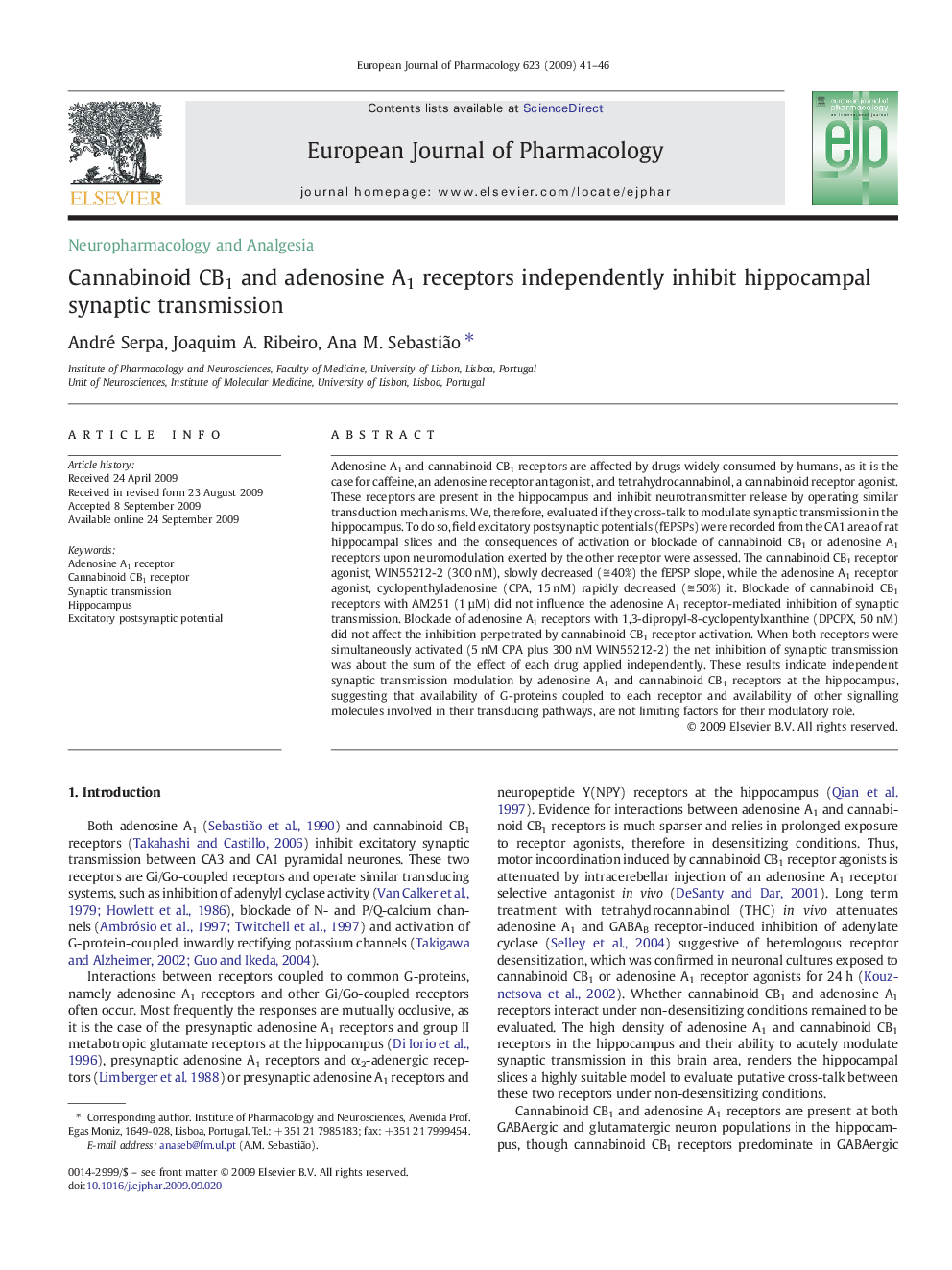| کد مقاله | کد نشریه | سال انتشار | مقاله انگلیسی | نسخه تمام متن |
|---|---|---|---|---|
| 2533932 | 1559071 | 2009 | 6 صفحه PDF | دانلود رایگان |

Adenosine A1 and cannabinoid CB1 receptors are affected by drugs widely consumed by humans, as it is the case for caffeine, an adenosine receptor antagonist, and tetrahydrocannabinol, a cannabinoid receptor agonist. These receptors are present in the hippocampus and inhibit neurotransmitter release by operating similar transduction mechanisms. We, therefore, evaluated if they cross-talk to modulate synaptic transmission in the hippocampus. To do so, field excitatory postsynaptic potentials (fEPSPs) were recorded from the CA1 area of rat hippocampal slices and the consequences of activation or blockade of cannabinoid CB1 or adenosine A1 receptors upon neuromodulation exerted by the other receptor were assessed. The cannabinoid CB1 receptor agonist, WIN55212-2 (300 nM), slowly decreased (≅ 40%) the fEPSP slope, while the adenosine A1 receptor agonist, cyclopenthyladenosine (CPA, 15 nM) rapidly decreased (≅ 50%) it. Blockade of cannabinoid CB1 receptors with AM251 (1 µM) did not influence the adenosine A1 receptor-mediated inhibition of synaptic transmission. Blockade of adenosine A1 receptors with 1,3-dipropyl-8-cyclopentylxanthine (DPCPX, 50 nM) did not affect the inhibition perpetrated by cannabinoid CB1 receptor activation. When both receptors were simultaneously activated (5 nM CPA plus 300 nM WIN55212-2) the net inhibition of synaptic transmission was about the sum of the effect of each drug applied independently. These results indicate independent synaptic transmission modulation by adenosine A1 and cannabinoid CB1 receptors at the hippocampus, suggesting that availability of G-proteins coupled to each receptor and availability of other signalling molecules involved in their transducing pathways, are not limiting factors for their modulatory role.
Journal: European Journal of Pharmacology - Volume 623, Issues 1–3, 25 November 2009, Pages 41–46